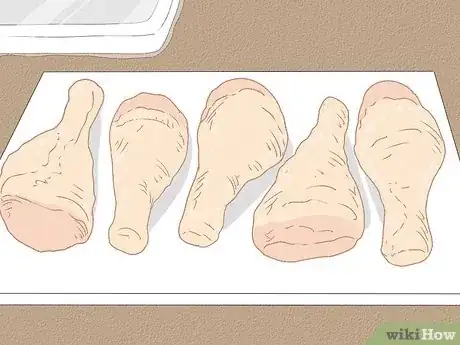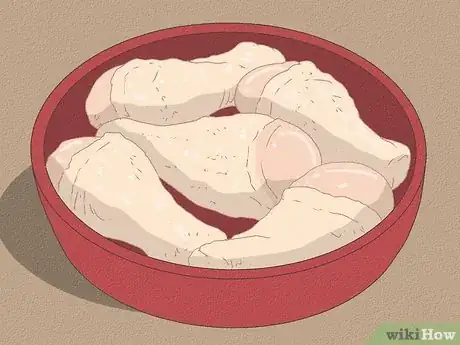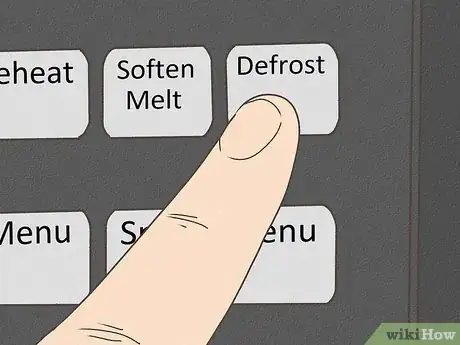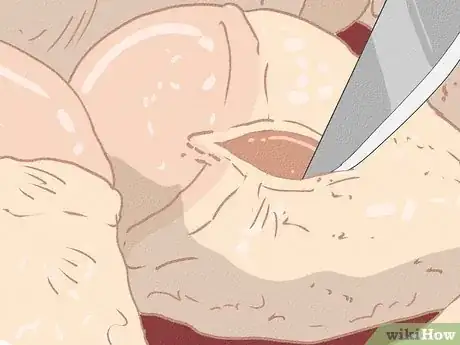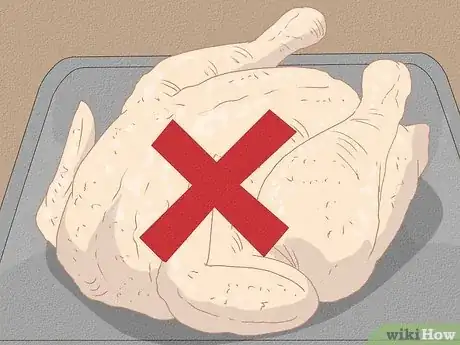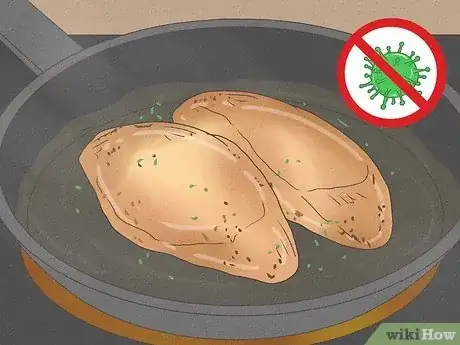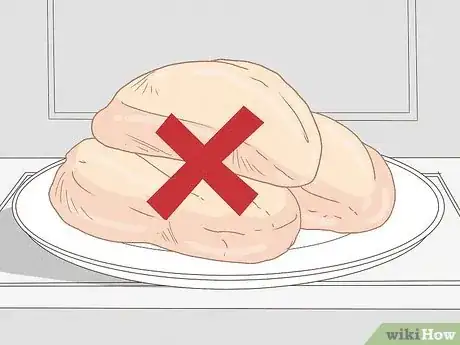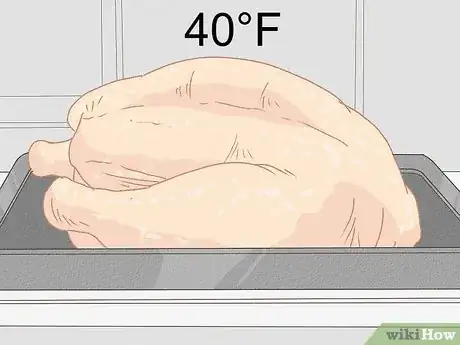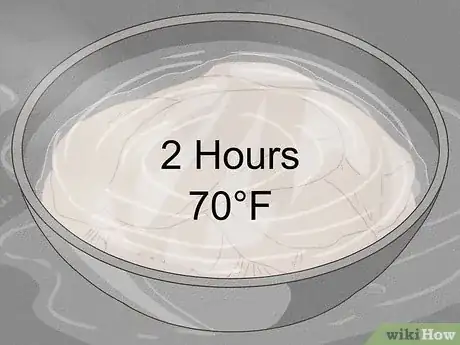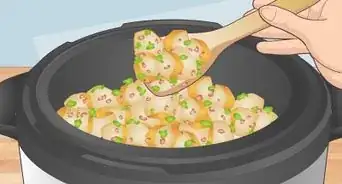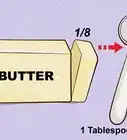This article was co-authored by JoAnna Minneci and by wikiHow staff writer, Johnathan Fuentes. JoAnna Minneci is a Professional Chef based in the Nashville, Tennessee area. With more than 18 years of experience, Chef JoAnna specializes in teaching others how to cook through private cooking lessons, team-building events, and wellness and nutrition classes. She has also appeared in numerous television shows on networks such as Bravo and Food Network. Chef JoAnna received Culinary Arts training from the Art Institute of California at Los Angeles. She is also certified in sanitation, nutrition, kitchen management, and cost control.
There are 9 references cited in this article, which can be found at the bottom of the page.
This article has been viewed 1,692 times.
Keeping chicken in the freezer until you’re ready to use it is a no-brainer. But when it’s time to defrost it, is it safe to do it in the microwave? Yes it is! As long as you do it correctly, using a microwave can be a safe and simple way to defrost chicken quickly. There a are few things to keep in mind though—especially if you want to avoid accidentally cooking your chicken or leaving it half-frozen. This guide will teach you the right way to defrost chicken in the microwave. Keep reading to get your next homemade chicken dinner off to an easy start.
Things You Should Know
- Remove your chicken from its original packaging, place it in a microwavable dish, and defrost it at 30% power for 7 minutes per lb. (14 minutes per kg).
- Check if your chicken is fully defrosted by using a knife to cut into the thickest part of the meat. If there’s still ice, defrost for another 2 minutes and check again.
- Cook your chicken immediately after defrosting. Raw chicken carries bacteria and pathogens, so it’s safest to cook it right away to prevent foodborne illness.
- You can also defrost a chicken in cold water or in the fridge overnight. Avoid defrosting a whole chicken in the microwave since it may start to partially cook.
Steps
Defrosting Chicken in the Microwave
-
1Remove your frozen chicken pieces from their original packaging. Remove the plastic wrap, styrofoam dish, and the absorbent pad that the chicken sits on. These materials may not be microwavable, so you don’t want them to melt or get damaged in your microwave.[1]
- If you got your chicken directly from a butcher counter, remove the butcher’s paper or plastic that it’s wrapped in.
- Avoid defrosting whole chickens and legs in the microwave. The bones, skin, and other materials won’t defrost correctly, and the meat may taste rubbery when you cook it.
-
2Place your chicken on a microwave-safe dish. Choose a microwave-safe plastic tub, bowl, or plate with high sides. The chicken may leak fluid as it thaws, so you’ll want those fluids to have somewhere to collect without spilling.[2]
- Avoid putting your chicken directly onto the glass dish that comes with your microwave (or onto the bottom of your microwave, if it didn’t come with a dish).
- It’s best not to defrost your chicken on a paper plate or anything absorbent, since the chicken will leak fluid as it thaws.
Advertisement -
3Select the defrost button (or set your microwave to 30% power). Use the defrost button if your microwave has one. Otherwise, use 30% power. Either option will slowly heat your chicken without cooking it. If you use a higher power setting, the outer parts of your chicken might begin to cook before the inside is fully thawed.[3]
- If your microwave has a dial for its power setting, turn the dial to roughly ¼ of the way above the lowest setting.
- This 30% power recommendation is based on a standard microwave, which uses about 800-1000 watts of power. If your microwave has a lower wattage than this, try a 40% or 50% power setting. Check the product label on your microwave (printed on the back, or on the inside of the door) to confirm its wattage.[4]
-
4Microwave your chicken for 7 minutes per lb. (or 14 min per kg). For example, if you are defrosting 3 lbs. (1.5 kg) of chicken, you should defrost it for a total of 21 minutes.[5]
- If your chicken is broken up into pieces, stop the microwave every 2 minutes and pull the frozen pieces apart. This helps them defrost more evenly.
-
5Make a small cut to check that the inside of the chicken is defrosted. Use a sharp knife to cut into the thickest part of the chicken. If it’s fully defrosted, you should see no ice crystals in the middle. If you do see ice crystals, put your chicken back in the microwave for another 2 minutes. Then check again by using a knife to cut a different, thick part of the chicken. Repeat this process until the chicken is fully thawed.[6]
- Be sure to set your microwave to “defrost” (or 30% power) each time.
- Cook your chicken immediately after defrosting it. There’s a high risk of bacteria and other foodborne illnesses in warm chicken, so it’s safest to prepare and cook it right away.[7]
Warnings
- Use your microwave’s defrost setting or set the power level to 30%.⧼thumbs_response⧽
- Don’t use a higher power setting, or your chicken may start to cook.⧼thumbs_response⧽
- Make sure your chicken has fully defrosted before cooking it.⧼thumbs_response⧽
- Cook your chicken immediately after defrosting due to the risk of bacteria and foodborne illness.⧼thumbs_response⧽
- Don’t refreeze chicken after defrosting it.⧼thumbs_response⧽
- Wash your hands thoroughly with soap and hot water after touching raw chicken.[13]⧼thumbs_response⧽
- Use soap and hot water to clean all dishware, knives, and any surface that touched raw chicken.[14]⧼thumbs_response⧽
References
- ↑ https://www.fsis.usda.gov/food-safety/safe-food-handling-and-preparation/food-safety-basics/cooking-microwave-ovens
- ↑ https://www.fsis.usda.gov/food-safety/safe-food-handling-and-preparation/food-safety-basics/cooking-microwave-ovens
- ↑ https://www.fsis.usda.gov/food-safety/safe-food-handling-and-preparation/food-safety-basics/cooking-microwave-ovens
- ↑ https://ask.usda.gov/s/article/how-do-you-determine-the-wattage-of-your-microwave-oven
- ↑ https://www.latimes.com/archives/la-xpm-1987-05-21-fo-1319-story.html
- ↑ https://www.bbcgoodfood.com/howto/guide/how-defrost-chicken
- ↑ https://www.fda.gov/media/80676/download
- ↑ https://microwaveninja.com/can-you-defrost-chicken-in-microwave-yeah-but-there-are-caveats/
- ↑ https://www.chicken.ca/chicken-school/storage-and-thawing-guide/
